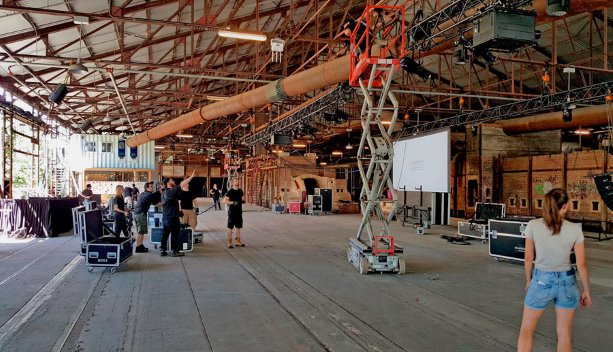Plans and policies for carbon reduction and net zero energy buildings are all well and good but taking them beyond the boardroom and into the field is what really counts.
"We need to make sure this stuff is getting built," says Andrew Bowerbank, global director, sustainable building services with EllisDon.
The constructor formed the Carbon Impact Initiative (CII) last June to do exactly that.
It is moving ahead with its first two pilot projects: one at Evergreen Brick Works in Toronto and the second at Mohawk College in Hamilton. The company is also in early negotiations on a third pilot with Metrolinx.
The mandate is to deal with carbon impact during construction and also once the building or infrastructure, transit systems and airports, for example, are fully operational, Bowerbank says.
This March work will commence on the conversion of the historic 53,000-square-foot kiln barns at Evergreen Brick Works – resulting in a project which meets carbon neutral targets and increases Evergreen Brick Works’ impact as a not-for-profit.
The kilns manufactured many of the bricks used on Toronto homes and other buildings erected in the 19th and 20th centuries.
One of the first challenges is with the low-lying flood plain at Evergreen. To keep the event space flood-free, the concrete floors will be raised two feet above the existing floor on cupola-like structures, says Bowerbank.
"It almost looks like an upside down egg carton with individual large plastic cups or cupolas (12 to 14 inches high) that sit on the old floor," he adds.
Concrete will be poured into the "nooks and crannies of the cupolas to create a solid floor two feet in height that only needs a fraction of the concrete of a traditional concrete slab pour," he says.
The flooring will feature radiant heating tied into a geothermal system.
CRH Canada is one of EllisDon’s partners on the project. CRH is a leader on the innovative concrete design at the kiln barns, explains Bowerbank.
Another issue at the project is how to ventilate the 53,000 square foot building without high energy consumption. The goal is to extend the building’s usage. Currently, it is used only a month or two a year, but the new design will enclose it enough for use over three seasons, says Bowerbank.
The roof will be well insulated and feature an array of solar panels expected to produce enough energy to eventually be integrated over the complex of buildings at Evergreen Brick Works.
The objective, says Bowerbank, is to hit a net zero energy target.
"How to use passive systems and natural air ventilation in and around the site rather than rely on large cooling (and heating) systems are an important part of this," he says.
Arup is the mechanical design consultant for the kiln barns project
The federal government has contributed funding towards the project and Bowerbank says he hopes the province will contribute money because the kiln barns fall in line with both governments’ objectives on carbon reduction.
Bowerbank says EllisDon has waived its fees to ensure the project is done within budget.
"Through the Carbon Impact Initiative, the pilots allow us to test our ability to respond to these kinds of projects that are hyper-efficient and are hitting these new international targets for climate change," he states.
But the key to success is to complete the projects on time and within budget.
"Just because a building is hitting these new kinds of targets is no excuse for us to slow down in the process or overprice the effort it takes to put the building in place," he says.
The new Evergreen event facility is proposed for completion in about a year.
The second pilot is a 100,000-square-foot research centre named after the Joyce Family Foundation at Mohawk College in Hamilton. It aims to achieve net zero energy and carbon neutral goals, says Bowerbank.
He adds EllisDon’s early negotiations with Metrolinx for a pilot concern "the best opportunities to collaborate for net zero energy, carbon neutral, sustainable transit systems."
Bowerbank says EllisDon has no intention of slowing down. Over the next 12 months expect to see 15 different pilot project types.
"People are going to see some amazing stuff over the coming year. That’s our goal," he says.











Recent Comments
comments for this post are closed